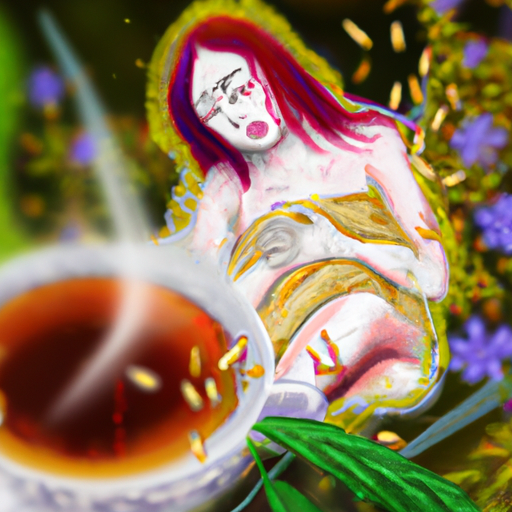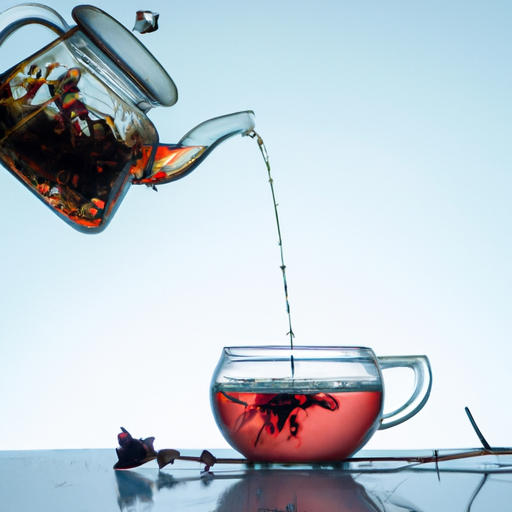Oolong Tea
What Is Oolong Tea?
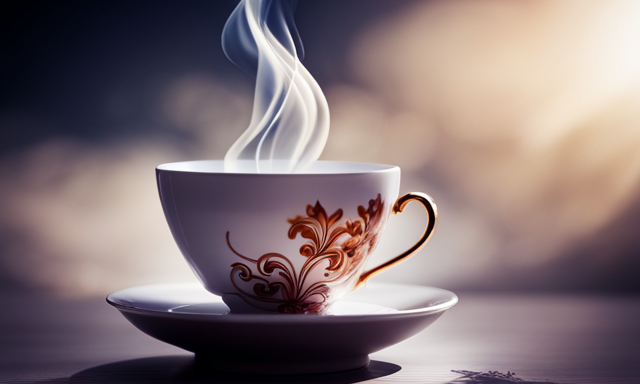
Step into the fascinating world of oolong tea, where every sip is a journey of flavor and tradition. As a tea enthusiast, I am thrilled to share with you the wonders of this unique and versatile beverage.
Oolong tea, with its rich history and distinct taste, has captured the hearts of tea lovers around the globe.
Originating from China, oolong tea is crafted through a meticulous oxidation process that brings out its characteristic flavors and aromas. From the delicate and floral to the robust and earthy, each variety of oolong tea offers a sensory experience like no other.
But it doesn’t stop there – oolong tea is also known for its numerous health benefits, from boosting metabolism to promoting weight loss.
Join me on this exploration of oolong tea, as we delve into its cultural significance, culinary applications, and where to find the finest blends. Let’s embark on this tea adventure together and discover the world of oolong tea.
Key Takeaways
- Oolong tea has a rich history and cultural significance in Chinese society, being served during important events and ceremonies.
- The oxidation process is crucial in creating the distinct flavor profiles of different oolong tea varieties, with timing playing a key role in achieving the desired level of oxidation.
- Oolong tea offers various health benefits, such as boosting metabolism, promoting weight loss, enhancing mental clarity, supporting digestive health, and strengthening the immune system.
- Brewing techniques, including temperature and steeping time, can be adjusted to enhance specific flavors and achieve the perfect cup of oolong tea.
Origins and History of Oolong Tea
The origins and history of oolong tea are truly fascinating. Oolong tea has its roots in China, where it has been cultivated for centuries. The exact origins of oolong tea are unknown, but it is believed to have originated in the Fujian province during the Ming dynasty.
The cultivation techniques used for oolong tea are highly specialized, with growers carefully tending to the plants to ensure the best quality leaves. Oolong tea holds significant cultural significance in Chinese society, often being served during important events and ceremonies. There are also specific rituals associated with the preparation and serving of oolong tea, adding to its allure.
Now, let’s delve into the oxidation process: how oolong tea is made.
The Oxidation Process: How Oolong Tea is Made
During the oxidation process, the leaves undergo a transformation that brings out a rich and complex flavor profile. Oolong tea production methods play a crucial role in achieving the desired flavor and aroma.
The level of oxidation determines the final characteristics of the tea. Once the leaves are plucked, they are carefully withered to reduce their moisture content. Then, the oxidation process begins by gently bruising the leaves, allowing them to react with the air.
The leaves are then spread out to oxidize further, and the timing is crucial to achieve the desired level of oxidation. This step is closely monitored to ensure that the leaves do not become too oxidized or under-oxidized.
The oxidation process contributes to the development of the unique flavor and aroma of oolong tea. It is this balance between oxidation and other factors that creates the distinct flavor profiles of different oolong tea varieties.
Distinct Flavor Profiles of Different Oolong Tea Varieties
Indulge your taste buds with the diverse and captivating flavor symphonies found in various oolong tea varieties. Each type of oolong tea offers a unique flavor profile that is a delight to explore.
From the floral and fruity notes of Tie Guan Yin to the rich and nutty taste of Da Hong Pao, there is an oolong tea to suit every palate.
The brewing techniques also play a crucial role in bringing out the distinct flavors of each variety. The temperature and steeping time can be adjusted to enhance specific flavors, allowing you to customize your tea experience.
As we delve into the health benefits of oolong tea, it’s fascinating to see how these flavors contribute to the overall well-being. So, let’s take the next sip and discover the incredible benefits that oolong tea has to offer.
Health Benefits of Oolong Tea
Get ready to savor the goodness of oolong tea as we explore its numerous health benefits. Oolong tea is not only a delightful beverage but also a powerhouse of health benefits. Here are four reasons why you should incorporate oolong tea into your daily routine:
-
Boosts Metabolism: Oolong tea contains polyphenols and caffeine that can increase metabolism and help burn calories more efficiently.
-
Enhances Mental Clarity: The combination of caffeine and L-theanine in oolong tea promotes alertness and improves focus, providing mental clarity throughout the day.
-
Supports Digestive Health: The antioxidants in oolong tea aid in digestion, reducing bloating and improving overall gut health.
-
Strengthens Immune System: Oolong tea is packed with antioxidants that can help strengthen the immune system and protect against common illnesses.
With its ability to boost metabolism and promote weight loss, oolong tea is a fantastic addition to any healthy lifestyle. Now, let’s dive into how it achieves these incredible benefits.
Boosts Metabolism and Promotes Weight Loss
Oolong tea is not only a delicious beverage, but it is also one of the best metabolism boosting foods out there. Research has shown that oolong tea can increase metabolism and promote weight loss by increasing fat oxidation and enhancing energy expenditure. It contains polyphenols, which activate enzymes that help break down fat cells and improve fat metabolism.
Additionally, oolong tea can help curb cravings and promote feelings of fullness, making it a great addition to any weight loss journey. So, if you’re looking for a natural and effective way to shed those extra pounds, incorporating oolong tea into your diet is definitely worth considering. It’s time to take your weight loss goals to the next level with this incredible tea.
And guess what? Oolong tea doesn’t just stop at boosting metabolism and promoting weight loss—it also improves heart health.
Improves Heart Health
Improving heart health is crucial for a longer, healthier life, and incorporating this remarkable beverage into your daily routine can make a significant difference. Oolong tea, with its rich antioxidants and polyphenols, has been shown to improve heart health in several ways:
-
Reduces cholesterol levels: Oolong tea helps lower LDL (bad) cholesterol levels, which can reduce the risk of heart disease.
-
Lowers blood pressure: Regular consumption of oolong tea has been linked to lower blood pressure levels, promoting a healthy cardiovascular system.
-
Enhances blood vessel function: The antioxidants in oolong tea can improve blood vessel function, reducing the risk of blood clots and improving overall heart health.
In addition to its heart-healthy benefits, oolong tea also enhances mental alertness and focus. It contains caffeine and L-theanine, which work together to stimulate the brain and improve cognitive function. Transitioning into the next section, oolong tea not only improves heart health but also enhances mental alertness and focus.
Enhances Mental Alertness and Focus
Boost your mental alertness and focus with this incredible beverage that will have you feeling sharper and more productive throughout the day, even if you’re concerned about caffeine intake.
Oolong tea not only provides a gentle boost of energy, but it also improves cognitive function and increases productivity. The combination of caffeine and theanine, an amino acid found in oolong tea, works together to enhance mental clarity and concentration.
The caffeine stimulates the central nervous system, while the theanine promotes a state of calm alertness, preventing the jittery feeling often associated with coffee. Studies have shown that oolong tea can improve memory, attention, and overall brain function.
So, if you’re looking for a natural way to stay focused and improve your mental performance, oolong tea is the perfect choice.
Transitioning to the next section, oolong tea also supports digestive health by aiding in digestion and promoting a healthy gut.
Supports Digestive Health
Aiding in digestion and promoting a healthy gut, this remarkable beverage is a soothing elixir for your digestive health. Oolong tea not only boosts energy but also aids in digestion, making it a perfect choice after a heavy meal. Its unique combination of catechins, antioxidants, and polyphenols helps to alleviate digestive issues such as bloating, indigestion, and constipation. Oolong tea stimulates the production of digestive enzymes, which enhances the breakdown of food and the absorption of nutrients. It also acts as a natural diuretic, flushing out toxins from the body and reducing water retention.
To give you a visual representation of the benefits of oolong tea for digestive health, here is a table showcasing its key properties:
| Benefits | Description |
|---|---|
| Boosts Energy | Provides a natural energy boost to combat fatigue |
| Aids in Digestion | Promotes healthy digestion and relieves digestive issues |
| Rich in Antioxidants | Fights free radicals and protects against cell damage |
| Supports Weight Loss | Helps to regulate metabolism and burn fat |
With its ability to support digestive health, oolong tea sets the stage for the subsequent section about how it strengthens the immune system.
Strengthens the Immune System
Feeling under the weather? Sip on a cup of this magical elixir and watch as it fortifies your immune system, giving it the strength of a superhero!
Oolong tea is packed with antioxidants and nutrients that boost immunity and strengthen defenses. Here are some reasons why you should make oolong tea your go-to beverage when you’re feeling a bit run down:
-
The polyphenols in oolong tea help fight off harmful bacteria and viruses, reducing the risk of infections.
-
Oolong tea contains catechins, which have been shown to have anti-inflammatory properties, supporting a healthy immune response.
-
The high levels of vitamin C in oolong tea stimulate the production of white blood cells, which are essential for a strong immune system.
-
Oolong tea also contains minerals like manganese and potassium, which play a crucial role in maintaining a healthy immune system.
So, why wait? Start brewing a cup of oolong tea and give your immune system the boost it needs.
Moving on to brewing techniques: tips for the perfect cup of oolong tea…
Brewing Techniques: Tips for the Perfect Cup of Oolong Tea
After learning about the immune-boosting benefits of oolong tea, let’s now delve into the art of brewing the perfect cup.
To achieve the optimal flavor and aroma, it’s essential to pay attention to two critical factors: brewing temperature and steeping time. Oolong tea leaves are delicate and require careful handling.
The ideal brewing temperature for oolong tea is usually between 180-200°F (82-93°C). Steeping time varies depending on personal preference and the specific oolong tea variety, but it typically ranges from 2 to 5 minutes. Longer steeping times result in a stronger and bolder flavor, while shorter times yield a milder taste.
Now that we have mastered the brewing techniques, let’s explore the world of oolong tea even further by discovering the popular oolong tea varieties and their unique characteristics.
Popular Oolong Tea Varieties and Their Characteristics
To fully appreciate the world of oolong tea, you’ll want to explore the popular varieties and their unique characteristics. Here is a table that showcases some of the most well-known oolong tea varieties and their defining traits:
| Variety | Characteristics |
|---|---|
| Tie Guan Yin | Floral aroma, smooth and mellow flavor |
| Da Hong Pao | Robust and rich with hints of roasted nuts and chocolate |
| Oriental Beauty | Sweet and fruity taste with a honey-like aroma |
| Jin Xuan (Milk) | Creamy and milky flavor, reminiscent of milk or butter |
| Wuyi Rock | Strong and earthy taste, with a lingering mineral note |
Each of these oolong teas has its own unique profile, offering a diverse range of flavors and aromas. Exploring these varieties will not only enhance your oolong tea experience but also provide insight into the intricacies of oolong tea brewing techniques and the potential health benefits it can provide. Now, let’s delve into the fascinating world of Tie Guan Yin (Iron Goddess).
Tie Guan Yin (Iron Goddess)
Moving on from the popular Oolong tea varieties, let’s delve into the fascinating world of Tie Guan Yin, also known as Iron Goddess. This tea is highly revered for its unique characteristics and health benefits.
Tie Guan Yin is cultivated in the Fujian province of China, where the climate and soil conditions create the perfect environment for its growth. The tea leaves are carefully hand-picked and processed to bring out their distinctive flavors and aromas.
When consumed, Tie Guan Yin offers a multitude of health benefits. It is known to aid in digestion, boost metabolism, and promote weight loss. This tea is also rich in antioxidants, which help to fight free radicals in the body and support overall well-being.
Now, let’s transition to our next subtopic, Da Hong Pao (Big Red Robe), another renowned Oolong tea variety.
Da Hong Pao (Big Red Robe)
Renowned for its rich history and revered as the king of all Oolong varieties, Da Hong Pao leaves tea enthusiasts captivated with its complex flavors and lingering aroma. Da Hong Pao, also known as Big Red Robe, is a highly prized tea from the Wuyi Mountains in China. Its history dates back to the Ming Dynasty, where it was said to have been enjoyed by the emperor himself. This prestigious tea is made from the leaves of ancient tea trees and is known for its bold, roasted taste with hints of caramel and chocolate. Its flavor profile is robust, yet smooth, and it leaves a pleasant, long-lasting aftertaste. The unique combination of the terroir and the meticulous processing methods contribute to the exquisite taste of this legendary tea. Now, let’s dive into the intriguing world of Bai Hao Oolong (Oriental Beauty).
Bai Hao Oolong (Oriental Beauty)
After exploring the rich history of Da Hong Pao, let’s delve into another fascinating type of oolong tea: Bai Hao Oolong, also known as Oriental Beauty. This unique tea is renowned for its exquisite flavor and aroma, making it a favorite among tea connoisseurs.
The tea making process of Bai Hao Oolong is meticulous and requires skilled hands. The leaves are carefully plucked from tea bushes that are infested by a specific type of small green leafhopper. These insects bite the leaves, causing them to release unique enzymes that contribute to the tea’s distinct flavor profile.
After plucking, the leaves are oxidized to a specific level, which results in a complex combination of fruity, floral, and honey-like notes.
Now, let’s move on to explore another delightful variant of oolong tea: Jin Xuan, also known as milk oolong.
Jin Xuan (Milk Oolong)
Jin Xuan, also known as milk oolong, is a velvety smooth and creamy delight that will transport your taste buds to a tranquil dairy farm. This unique oolong tea gets its distinct flavor profile from the Jin Xuan cultivar, which is grown in the high mountain regions of Taiwan. The leaves of this tea are hand-picked and carefully processed to bring out the natural milky and buttery notes.
To fully appreciate the flavors of milk oolong, it is important to use the right brewing techniques. The water temperature should be around 185°F (85°C) and the leaves should steep for about 3-4 minutes. This will allow the tea to develop its rich and creamy taste, reminiscent of sweet milk and orchids.
Transitioning to the next section, let’s explore the unique characteristics of dong ding (frozen summit) oolong tea.
Dong Ding (Frozen Summit)
Moving on from the delightful Jin Xuan (Milk Oolong), let’s now delve into the realm of Dong Ding (Frozen Summit) oolong tea. This particular tea, named after the mountain where it is grown in Taiwan, offers a fascinating production process and unique characteristics.
To create Dong Ding tea, the leaves are hand-picked and gently withered. They are then tossed in large bamboo baskets to bruise the edges, initiating oxidation. The leaves are then gently roasted multiple times to develop their complex flavors.
When brewed, Dong Ding oolong tea showcases a rich and smooth flavor profile with floral and fruity undertones. It often carries the aroma of ripe peaches and offers a sweet, honey-like finish.
With its distinctive production process and captivating flavor notes, Dong Ding oolong tea is a true gem.
Now, let’s further explore the wonders of oolong tea and its deep-rooted connections to traditional Chinese tea culture.
Oolong Tea and Traditional Chinese Tea Culture
Discover the rich tapestry of traditional Chinese tea culture and immerse yourself in the ancient rituals and customs that have shaped the world of this beloved beverage.
Oolong tea holds a significant place within this cultural landscape, showcasing the artistry and expertise of Chinese tea masters. Its cultural significance is reflected in the intricate processing methods, which involve withering, oxidation, and unique roasting techniques.
Oolong tea is not only enjoyed for its exquisite taste but also for its positive impact on the environment. The tea leaves are grown in mountainous regions, where the natural ecosystem is preserved and protected. This sustainable approach ensures the longevity of both the tea plants and the surrounding environment.
As oolong tea gains popularity worldwide, its cultural heritage and environmental benefits continue to captivate tea enthusiasts across the globe.
The Growing Popularity of Oolong Tea Worldwide
With its delicate flavors and health benefits, oolong tea has swiftly become a global sensation, spreading like wildfire across continents. Its growing popularity can be attributed to several factors:
-
Health benefits: Oolong tea is rich in antioxidants, which help boost the immune system and reduce the risk of chronic diseases. It also aids in weight management and promotes healthy skin.
-
Different brewing techniques: Oolong tea offers a wide range of flavors depending on the brewing technique used. From a light and floral taste to a rich and robust flavor, there is a brewing method to suit every palate.
-
Cultural appreciation: As more people become interested in traditional Chinese tea culture, oolong tea has gained recognition for its significance and history.
-
Versatility: Oolong tea is not only enjoyed as a beverage, but it is also a versatile ingredient in culinary applications, adding unique flavors to dishes and desserts.
As oolong tea continues to captivate tea lovers worldwide, its versatility as a culinary ingredient will be explored in the subsequent section.
Oolong Tea: A Versatile Ingredient in Culinary Applications
As we’ve seen, the popularity of oolong tea has been steadily growing worldwide. But did you know that oolong tea is not just a beverage, but also a versatile ingredient in culinary applications?
Its unique flavor profile and aroma make it a favorite among chefs and food enthusiasts alike. Oolong tea can be used in a variety of dishes, from savory marinades to sweet desserts. Its floral, fruity, and sometimes nutty notes add depth and complexity to any recipe.
The culinary creativity that comes with using oolong tea knows no bounds, as it can be paired with a wide range of ingredients to create unique flavor combinations.
So, whether you’re a professional chef or a home cook looking to elevate your dishes, consider incorporating oolong tea into your culinary repertoire.
Now, let’s explore where to find and buy high-quality oolong tea.
Where to Find and Buy High-Quality Oolong Tea
Looking to elevate your culinary creations? Find and buy the finest oolong tea from reputable tea shops and online vendors.
When it comes to where to buy oolong tea online, there are several options to consider. One of the best oolong tea brands is Teavana, known for their high-quality loose leaf teas. They offer a wide variety of oolong teas, ranging from light and floral to rich and toasty.
Another great option is Mountain Rose Herbs, an online retailer that specializes in organic and sustainably sourced teas. They have a selection of premium oolong teas that are sure to impress even the most discerning tea connoisseurs.
Whether you prefer the convenience of online shopping or the personal touch of a local tea shop, these options will ensure you find the perfect oolong tea for your culinary needs.
Frequently Asked Questions
How does the oxidation process affect the flavor of oolong tea?
The oxidation process in oolong tea is like a delicate dance, transforming its flavor profile. As the tea leaves undergo oxidation, their natural flavors deepen and develop, resulting in a complex and nuanced taste that is unique to oolong tea.
Can oolong tea be beneficial for individuals with digestive issues?
Oolong tea can be beneficial for individuals with digestive issues. It helps improve digestion, reduce inflammation, and provide relief from symptoms like bloating and indigestion. Its effectiveness lies in its natural compounds that promote a healthy digestive system.
Are there any specific brewing techniques that are recommended for oolong tea?
To bring out the best flavor profiles of oolong tea, specific brewing techniques are recommended. For example, using water at around 190-200°F and steeping for 3-5 minutes can enhance its rich, floral, and slightly fruity taste.
What is the significance of Tie Guan Yin and Da Hong Pao oolong tea varieties?
The significance of tie guan yin and da hong pao oolong tea varieties lies in their rich history and unique flavors. They are highly prized in traditional Chinese tea ceremonies and offer numerous health benefits for digestion. The oxidation process gives oolong tea its distinct flavor profile.
Is oolong tea commonly used in traditional Chinese tea ceremonies?
Yes, oolong tea is commonly used in traditional Chinese tea ceremonies. Its cultural significance lies in its historical connection to Chinese tea culture and its reputation as a high-quality and flavorful tea variety.
Conclusion
Oolong tea is a type of tea that falls between green tea and black tea in terms of oxidation. It is known for its unique and complex flavors, which can range from floral and fruity to toasty and earthy. The leaves of oolong tea are partially oxidized, giving them a distinct appearance and taste. This oxidation process is what sets oolong tea apart from other types of tea.
Oolong tea has a long history in Chinese culture and is often associated with traditional tea ceremonies. It is believed to have originated in the Fujian province of China, where it is still produced today. The production of oolong tea involves withering the leaves under the sun, then gently bruising them to start the oxidation process. The leaves are then rolled and shaped before being dried. This careful process allows the flavors and aromas of the tea to develop fully.
One of the key characteristics of oolong tea is its ability to offer a wide range of flavors and aromas. This is due to the varying degrees of oxidation that different varieties of oolong tea undergo. Lightly oxidized oolongs tend to have a more delicate and floral flavor profile, while heavily oxidized oolongs can have a richer and more robust taste. Some oolong teas may even exhibit a natural sweetness or a lingering aftertaste.
In addition to its enticing flavors, oolong tea is also known for its potential health benefits. It contains antioxidants that can help protect the body against free radicals and reduce the risk of chronic diseases. Oolong tea has also been associated with boosting metabolism and aiding in weight loss. It may also have a positive impact on heart health and digestion.
Overall, oolong tea offers a tantalizing experience for tea enthusiasts. Its unique flavors, rich history, and potential health benefits make it a popular choice among tea drinkers. Whether you prefer a light and delicate oolong or a bold and robust one, exploring the world of oolong tea is sure to be a tantalizing adventure. So why not indulge in a cup of oolong tea and savor its tantalizing allure for yourself?
Oolong Tea
Trim Healthy Mama Why Oolong Tea
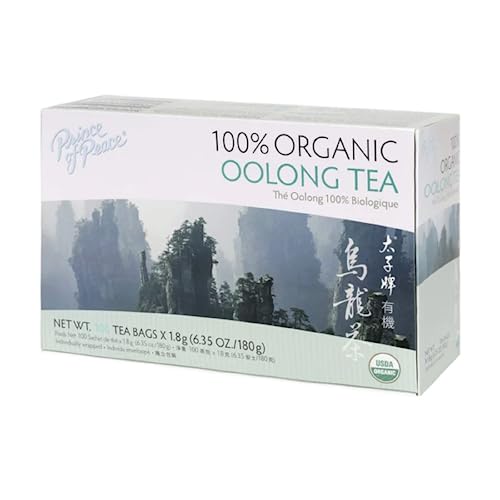
Have you ever wished for a magical elixir that could help you achieve your health and weight loss goals? Well, look no further because I have discovered the secret: oolong tea.
This remarkable beverage has been praised for its numerous benefits, and as a trim healthy mama, I can confidently say that oolong tea has become my ultimate go-to drink.
Why is oolong tea so special, you ask? Well, let me tell you. Not only does it support weight loss by boosting metabolism, but it also helps in balancing blood sugar levels and improving digestion. And that’s not all – oolong tea is packed with antioxidants that promote overall health and well-being. Plus, it enhances mental focus and alertness, making it the perfect companion for those busy days.
In this article, I will delve deeper into the wonders of oolong tea and how you can incorporate it into your trim healthy mama lifestyle. Get ready to discover the extraordinary benefits and delicious ways to enjoy this magical tea in your daily routine. Trust me, once you try oolong tea, you’ll wonder how you ever lived without it.
Key Takeaways
- Oolong tea provides an energy boost.
- Oolong tea contains antioxidants.
- Oolong tea offers a range of health benefits.
- Oolong tea reduces inflammation and fights free radicals.
Introduction to Oolong Tea and its Benefits
If you’re looking for a delicious and refreshing way to boost your health, oolong tea is the perfect choice for you! Oolong tea is a traditional Chinese tea that falls between the categories of black and green tea. It’s known for its unique taste and numerous health benefits.
Oolong tea is rich in antioxidants, which help to fight off free radicals in the body and protect against chronic diseases. It also contains caffeine, which can provide a gentle boost of energy without the jitters commonly associated with coffee.
When it comes to brewing techniques, oolong tea can be steeped in hot water for a few minutes, allowing the leaves to unfurl and release their flavors. There are various oolong tea varieties available, each with its own distinct taste and aroma.
Transitioning into the next section, oolong tea supports weight loss by boosting metabolism and reducing fat absorption.
How Oolong Tea Supports Weight Loss
Are you looking for a natural way to enhance your weight loss journey and boost your metabolism? Oolong tea may be just what you need! This incredible beverage not only tastes delicious, but it also offers numerous benefits for weight loss.
Here are a few ways that oolong tea supports weight loss:
- Oolong tea helps maintain hormonal balance, which is crucial for weight management.
- It contains antioxidants that can reduce inflammation in the body, making it easier to shed those extra pounds.
- The caffeine found in oolong tea can increase fat oxidation and boost metabolism.
- Oolong tea can also help control blood sugar levels and prevent cravings for unhealthy foods.
By incorporating oolong tea into your diet, you can enjoy these weight loss benefits and more.
In the next section, we’ll explore how oolong tea can help boost your metabolism.
Boosting Metabolism with Oolong Tea
Rev up your body’s calorie-burning engine by incorporating the powerful metabolism-boosting properties of oolong tea into your daily routine. Oolong tea contains compounds that can increase energy expenditure and fat oxidation, leading to weight loss. One study found that oolong tea can increase metabolism by up to 10%. In addition to boosting metabolism, oolong tea can also enhance energy levels, making it a great choice for those looking to stay active and burn more calories throughout the day. Furthermore, oolong tea has anti-inflammatory properties that can help reduce inflammation in the body. This is important because chronic inflammation has been linked to weight gain and obesity. By reducing inflammation, oolong tea can support a healthier weight. Transitioning into the next section, oolong tea is also beneficial for balancing blood sugar levels.
Balancing Blood Sugar Levels with Oolong Tea
Maintain stable blood sugar levels throughout the day by incorporating the balancing effects of oolong tea into your daily routine. Oolong tea has been shown to have a positive impact on blood sugar levels by balancing hormones and reducing inflammation.
Here are three ways oolong tea can help balance blood sugar levels:
-
Regulating insulin production: Oolong tea contains compounds that can help regulate insulin levels, preventing sudden spikes and crashes in blood sugar.
-
Enhancing insulin sensitivity: Oolong tea has been found to improve insulin sensitivity, allowing the body to use insulin more effectively and maintain stable blood sugar levels.
-
Reducing inflammation: Chronic inflammation can disrupt normal blood sugar regulation. Oolong tea’s anti-inflammatory properties can help reduce inflammation, promoting better blood sugar control.
By incorporating oolong tea into your daily routine, you can support balanced blood sugar levels and improve overall health. This sets the stage for the subsequent section on improving digestion and gut health.
Improving Digestion and Gut Health
Feast on fermented foods to foster a flourishing gut and enhance digestion.
Fermented foods such as sauerkraut, kimchi, and kefir are rich in beneficial bacteria that help heal a leaky gut and reduce inflammation. These probiotics promote the growth of good bacteria in the gut, improving digestion and nutrient absorption.
Additionally, fermented foods contain enzymes that aid in the breakdown of food, making it easier for the body to digest. By incorporating fermented foods into your diet, you provide your gut with the tools it needs to maintain a healthy balance and function optimally. This can contribute to overall gut health and improve digestion.
As we transition into the subsequent section about oolong tea as a source of antioxidants, it’s important to note that gut health plays a crucial role in our body’s ability to absorb and utilize these antioxidants effectively.
Oolong Tea as a Source of Antioxidants
To amplify the impact of antioxidants in your diet, consider incorporating oolong tea as a potent source of these essential compounds. Oolong tea is rich in polyphenols, which are powerful antioxidants that can help protect your cells from damage caused by harmful free radicals. These antioxidants have been shown to have a positive impact on heart health by reducing the risk of heart disease and lowering blood pressure. Additionally, oolong tea has been found to promote skin health by improving skin elasticity and reducing the appearance of wrinkles. It’s important to note that while oolong tea has many potential health benefits, it should be consumed in moderation as part of a balanced diet. Moving forward, let’s explore how oolong tea can enhance mental focus and alertness.
Enhancing Mental Focus and Alertness
Boost your cognitive abilities and stay sharp throughout the day with the incredible power of oolong tea. It can enhance mental focus and alertness in four ways:
-
Increased Brain Function: Oolong tea contains caffeine and L-theanine, which work together to improve brain function and promote mental clarity.
-
Enhanced Concentration: The combination of caffeine and antioxidants in oolong tea can help increase focus and concentration. This allows you to stay on task for longer periods.
-
Improved Memory: Studies have shown that oolong tea may have a positive effect on memory and learning abilities. It is a great choice for students and professionals alike.
-
Reduced Mental Fatigue: The energizing properties of oolong tea can combat mental fatigue and keep you alert and productive throughout the day.
Incorporating oolong tea into the trim healthy mama lifestyle provides a natural and effective way to boost mental performance.
Incorporating Oolong Tea into the Trim Healthy Mama Lifestyle
Infuse your lifestyle with the invigorating essence of this ancient elixir, allowing its vibrant notes to dance on your palate and elevate your journey as a Trim Healthy Mama. Incorporating oolong tea into your THM desserts can add a unique flavor profile and provide a natural energy boost.
Oolong tea contains caffeine, which can help improve focus and alertness, making it the perfect addition to your busy routine. Not only does oolong tea provide an energy boost, but it also contains antioxidants that support overall health and well-being.
By incorporating this delightful tea into your daily routine, you can enjoy its numerous benefits while staying on track with your Trim Healthy Mama lifestyle. Now, let’s explore some delicious ways to enjoy oolong tea in your daily routine, enhancing both your taste buds and your well-being.
Delicious Ways to Enjoy Oolong Tea in Your Daily Routine
Indulge your taste buds and elevate your daily routine with the delightful flavors of oolong tea, adding a unique twist to your beverages and desserts. Oolong tea isn’t just delicious, but it also offers a range of health benefits.
One way to enjoy this flavorful tea is by incorporating it into various recipes. You can use oolong tea as a base for refreshing iced teas or add it to smoothies for an extra boost of flavor. Additionally, oolong tea can be used in baking to infuse cakes, cookies, and muffins with its distinctive taste.
In addition to its culinary uses, oolong tea is also beneficial for skincare. The antioxidants found in oolong tea can help promote healthier skin by reducing inflammation and fighting free radicals. You can incorporate oolong tea into your skincare routine by using it as a facial toner or adding it to DIY face masks.
So, why not explore the world of oolong tea recipes and discover the wonders it can bring to your taste buds and skincare routine?
Frequently Asked Questions
Can oolong tea help with reducing stress and promoting relaxation?
Sure! Oolong tea can help improve sleep quality, which in turn reduces stress and promotes relaxation. It also has a positive impact on mental well-being by calming the mind and reducing anxiety.
Is oolong tea suitable for individuals with caffeine sensitivity?
Oolong tea may not be suitable for individuals with caffeine sensitivity. They can try oolong tea alternatives like herbal teas or caffeine-free teas, which still offer various health benefits without the stimulating effects of caffeine.
Does oolong tea have any potential side effects?
Oolong tea has no potential side effects when consumed in moderation. It is known for its health benefits, such as improving metabolism and aiding in weight loss.
Can oolong tea help with reducing cravings and controlling appetite?
Oolong tea can help reduce cravings and control appetite. Studies have shown that it can increase metabolism and decrease hunger levels, making it an effective tool for weight management.
Is there a recommended daily dosage of oolong tea for weight loss?
There is no specific recommended daily dosage of oolong tea for weight loss. However, studies suggest consuming 2-3 cups per day may be beneficial. It’s important to note that oolong tea may have potential side effects, such as caffeine sensitivity or digestive issues.
Conclusion
In conclusion, incorporating Oolong tea into the Trim Healthy Mama lifestyle can be a beneficial choice for weight loss and overall well-being. With its ability to boost metabolism and balance blood sugar levels, improve digestion, and enhance mental focus, Oolong tea offers a multitude of health benefits. Additionally, Oolong tea is rich in antioxidants, which can help protect against free radicals and promote a healthy immune system. Interestingly, studies have shown that Oolong tea can increase fat burning by up to 12%, making it a valuable addition to any weight loss journey. So why not sip on a cup of Oolong tea and enjoy its numerous advantages today?
Oolong Tea
What Part Of Tea Tree Plant Is Used For Oolong Tea
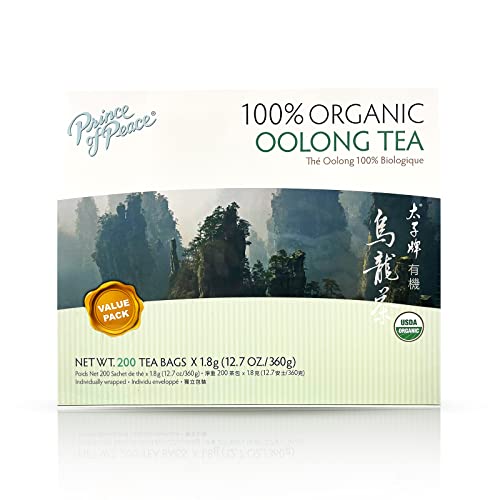
Have you ever wondered what part of the tea tree plant is used to make oolong tea? Well, let me take you on a journey through the fascinating world of this beloved tea.
Oolong tea, known for its unique flavor and aroma, is made from the leaves of the Camellia sinensis plant. These leaves undergo a special process that sets oolong tea apart from other varieties.
Imagine a tea farmer carefully handpicking the tender, young leaves from the plant. These leaves are then skillfully processed using traditional techniques, including withering, rolling, and oxidizing. The level of oxidation is key to determining the flavor profile of oolong tea, ranging from light and floral to rich and toasty.
As you delve deeper into the article, you will discover the health benefits of oolong tea, brewing tips to enhance your tea experience, and an exploration of the various oolong tea varieties.
So, sit back, relax, and join me on this enlightening journey into the world of oolong tea.
Key Takeaways
- Oolong tea is made from the leaves of the Camellia sinensis plant.
- The leaves used for oolong tea are mature leaves and buds.
- Tea tree oil is not derived from the leaves used for oolong tea.
- Oolong tea combines the freshness of green tea with the richness of black tea.
Introduction to Oolong Tea
Oolong tea combines the freshness of green tea with the richness of black tea. It is a traditional Chinese tea that falls between green and black teas in terms of oxidation levels.
Oolong tea has a long and fascinating history that dates back over 400 years. Legend has it that oolong tea was discovered by a tea farmer who forgot about his tea leaves and they oxidized more than usual, resulting in a unique flavor. Since then, oolong tea has become highly prized for its complex taste and health benefits.
It is known for its floral and fruity flavors, as well as its smooth and mellow texture. Now, let’s explore the tea leaves used for oolong tea.
The Tea Leaves Used for Oolong Tea
The leaves that go into making this unique and flavorful tea are carefully selected and processed. Oolong tea is made from the Camellia sinensis plant, just like black and green tea. However, oolong tea is distinct in its taste and aroma due to the specific leaves used.
Oolong tea is made from mature leaves and buds, which are plucked from the tea tree. These leaves are then withered under the sun to reduce moisture content. After withering, the leaves are lightly oxidized, which gives oolong tea its characteristic flavor profile. The oxidation process is crucial in developing the complex flavors and aromas of oolong tea.
It is interesting to note that tea tree oil, known for its medicinal properties, is not derived from the leaves used for oolong tea. Instead, it is extracted from the leaves of a different plant species.
Now, let’s explore the fascinating harvesting methods for oolong tea.
Harvesting Methods for Oolong Tea
Imagine you’re standing in a lush tea garden, surrounded by skilled farmers who expertly pluck the most exquisite leaves and buds, like delicate treasures, to create the captivating oolong brew. Harvesting methods for oolong tea play a crucial role in ensuring the quality and taste of this beloved beverage. There are two primary methods employed: hand picking and machine harvesting. Hand picking involves carefully selecting the young leaves and buds by hand, ensuring only the finest and freshest ones are chosen. This meticulous process requires skilled hands and a deep understanding of the tea plant. On the other hand, machine harvesting involves the use of specialized equipment that mechanically harvests the leaves. While this method is more efficient, it may not achieve the same level of precision as hand picking. The chosen method greatly impacts the flavor profile and overall quality of the oolong tea produced. Transitioning into the subsequent section about ‘processing techniques for oolong tea,’ the harvested leaves undergo a series of intricate steps to bring out their unique characteristics.
Processing Techniques for Oolong Tea
Step into the world of oolong tea processing and discover the artistry behind crafting its distinctive flavors and aromas.
In the process of creating oolong tea, the fermentation process plays a significant role. After the leaves are harvested, they undergo a controlled fermentation process that brings out the unique characteristics of oolong tea. This fermentation process allows the tea leaves to develop complex flavors and aromas, giving oolong tea its rich and nuanced taste.
Another crucial aspect of oolong tea processing is the roasting technique. This step involves carefully roasting the fermented tea leaves to enhance their flavors and create a balanced and aromatic profile. Roasting helps to remove any residual moisture from the leaves and adds a subtle smokiness to the tea. It also helps to seal in the flavors and aromas, ensuring a delightful cup of oolong tea.
As we delve into the subsequent section about oxidation levels in oolong tea, we’ll explore how this process further contributes to the unique qualities of this beloved beverage.
Oxidation Levels in Oolong Tea
Explore the varying degrees of oxidation in oolong tea, allowing you to appreciate the intricate balance of flavors and aromas that each level brings to your cup.
-
Delicate oxidation: This light oxidation level preserves the tea’s fresh, floral notes, giving it a refreshing and subtle taste that dances on your palate.
-
Moderate oxidation: With a deeper oxidation level, oolong tea develops a richer flavor profile, showcasing notes of fruit, honey, and roasted nuts. The complexity of this tea keeps your taste buds engaged with each sip.
-
Heavy oxidation: This intense oxidation level produces a robust and bold oolong tea, characterized by deep, earthy flavors and a smooth finish. It offers a satisfying depth that lingers on your tongue, leaving you craving for more.
Understanding the oxidation levels in oolong tea sets the stage for exploring the unique flavor profiles that each step brings to your cup, creating a truly enriching tea experience.
Now, let’s delve into the fascinating world of oolong tea flavors.
Flavor Profiles of Oolong Tea
Get ready to embark on a tantalizing journey as your taste buds are transported to a world of enticing flavor profiles found in the captivating realm of oolong tea. Oolong tea offers a wide range of flavor profiles, making it a beloved choice among tea connoisseurs.
From floral and fruity notes to woody and nutty undertones, oolong tea has something to offer for every palate. The flavor profiles of oolong tea can vary depending on factors such as the oxidation level, growing region, and brewing techniques.
By adjusting the brewing time and water temperature, you can bring out different flavors and aromas in your oolong tea. Whether you prefer a light and delicate brew or a rich and robust infusion, oolong tea has the versatility to cater to your taste preferences.
As we explore the health benefits of oolong tea, you will discover how this exquisite beverage can nourish both your body and soul.
The Health Benefits of Oolong Tea
Indulge in the delightful and invigorating benefits of oolong tea as it tantalizes your taste buds and nourishes your body and soul. Here are four fascinating facts about oolong tea that’ll capture your attention:
-
The history of oolong tea dates back to ancient China, where it was enjoyed by emperors and scholars for its exquisite taste and health benefits.
-
Oolong tea falls between black and green tea in terms of caffeine content. It provides a gentle energy boost without the jitters often associated with coffee.
-
Oolong tea is rich in antioxidants that help combat free radicals and promote overall well-being.
-
Studies suggest that oolong tea may aid in weight management by boosting metabolism and reducing fat absorption.
Now, let’s delve into the art of brewing oolong tea and discover the secrets to making the perfect cup.
Brewing Tips for Oolong Tea
Now that we’ve explored the health benefits of oolong tea, let’s dive into some brewing tips to ensure you get the most out of your tea experience.
The brewing temperature for oolong tea is crucial, as it can greatly affect the flavor profile. Generally, oolong tea is best brewed at a temperature between 190-205°F (88-96°C). This allows the leaves to unfurl and release their unique flavors without scalding them.
As for steeping time, it varies depending on the type of oolong tea you have. Lighter oolong teas may require a shorter steeping time of around 2-3 minutes, while darker oolong teas can be steeped for 4-5 minutes. Remember to experiment and adjust the brewing parameters to suit your taste preferences.
By carefully controlling the temperature and steeping time, you can unlock the full potential of your oolong tea.
So, let’s move on to exploring different varieties of oolong tea.
Exploring Different Varieties of Oolong Tea
Take a journey through the diverse world of oolong tea and discover a multitude of flavors and aromas that will transport your taste buds to paradise.
When exploring different varieties of oolong tea, it’s fascinating to delve into the tea plantations where these exceptional teas are grown. Oolong tea is meticulously crafted through a complex production process that requires careful attention to detail.
From plucking the tender tea leaves to withering, rolling, and oxidizing, each step contributes to the unique characteristics of oolong tea. The level of oxidation can vary, resulting in a wide range of flavors, from light and floral to rich and robust.
By exploring the various tea plantations and understanding the oolong tea production process, you can truly appreciate the artistry and skill that goes into creating this extraordinary beverage.
Frequently Asked Questions
How long does it take for the tea leaves to oxidize during the processing of oolong tea?
During the processing of oolong tea, the tea leaves typically oxidize for around 60-75 minutes. Oolong tea is best brewed using loose tea leaves to allow for proper infusion and release of flavors. Using a regular tea bag may not provide the same quality and taste.
What are the different types of harvesting methods used for oolong tea production?
There are three common harvesting methods for oolong tea: hand plucking, machine harvesting, and combination harvesting. Hand plucking is the most common and labor-intensive method, ensuring the highest quality leaves. Oolong tea offers numerous health benefits, including improved digestion and heart health.
Can oolong tea be brewed using a regular tea bag or is it necessary to use loose tea leaves?
Oolong tea can be brewed using either a regular tea bag or loose tea leaves. While tea bags are more convenient, loose tea leaves offer a richer and more flavorful experience.
Are there any specific health benefits of oolong tea for weight loss?
Oolong tea has specific health benefits for weight loss. Its metabolism-boosting properties and ability to regulate blood sugar levels can aid in shedding pounds. Incorporating oolong tea into a balanced diet can support your weight loss journey.
Are there any specific brewing techniques or equipment that should be used for different varieties of oolong tea?
To properly brew different varieties of oolong tea, it is important to consider the specific brewing techniques and equipment used. These factors play a crucial role in achieving the perfect balance of flavors and extracting the tea’s unique characteristics.
Conclusion
In conclusion, oolong tea is a fascinating beverage that offers a multitude of flavors and health benefits. One interesting statistic that may surprise you is that oolong tea has been found to help boost metabolism and aid in weight loss. Studies have shown that regularly consuming oolong tea can increase fat burning by up to 10%.
This impressive statistic showcases the potential of oolong tea as a natural and effective tool for those looking to maintain a healthy weight. So why not indulge in a cup of oolong tea and experience its wonders for yourself?
Oolong Tea
What Is Oolong Milk Tea Made Of
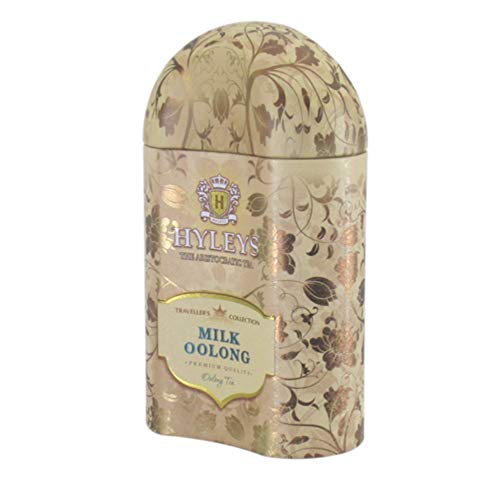
As a tea enthusiast and self-proclaimed connoisseur, I find great pleasure in exploring the world of unique and flavorful beverages. Among my vast collection of tea experiences, one particular blend stands out for its exquisite taste and creamy texture: oolong milk tea.
This delightful concoction combines the rich, malty notes of oolong tea with the velvety smoothness of milk, creating a harmonious fusion of flavors. But what exactly goes into this tantalizing beverage?
Allow me to take you on a journey through the intricate composition of oolong milk tea, unraveling its secrets and shedding light on the precise techniques used to craft this culinary masterpiece.
From the selection of the finest oolong tea leaves to the artful addition of sweeteners and toppings, we will delve into the realm of tea expertise, exploring the nuances and complexities that make oolong milk tea a true delight for the senses.
So sit back, relax, and prepare to immerse yourself in the world of oolong milk tea.
Key Takeaways
- Oolong milk tea is made from oolong tea leaves that undergo a unique fermentation process, resulting in a distinct flavor profile with floral and fruity notes.
- Condensed milk can be substituted with alternatives like almond milk or coconut milk to achieve similar richness and customize the taste of oolong milk tea.
- Customization options for oolong milk tea include adjusting the sweetness level by varying the amount of sugar or sweetener used and exploring different tea blends to enhance the flavor profile.
- Brewing techniques such as using optimal brewing temperature and steeping time help to extract flavors without bitterness and create the perfect cup of oolong milk tea.
Oolong Tea: The Base Ingredient
If you’re curious about what goes into making a delicious oolong milk tea, you’ll be glad to know that the base ingredient is none other than oolong tea itself!
Oolong tea is a type of tea that falls between green tea and black tea in terms of oxidation. It is known for its unique flavors and health benefits. There are several different types of oolong tea, including Tie Guan Yin, Da Hong Pao, and Oriental Beauty, each with its own distinctive characteristics.
The tea leaves used in oolong milk tea are carefully selected and processed to achieve the desired flavor profile. The fermentation process plays a crucial role in enhancing the flavors of oolong tea.
Adding milk to oolong tea not only adds creaminess but also brings depth of flavor.
The next section will explore how milk complements the oolong tea to create a delightful beverage.
Milk: Adding Creaminess and Depth of Flavor
To enhance the richness of your oolong milk tea, whisk in a velvety drizzle of creamy goodness, like a gentle breeze carrying whispers of indulgence. Adding milk alternatives can elevate the flavor and provide a unique twist to this classic beverage. Experimenting with different milk ratios allows for a customizable experience, tailoring the creaminess to your preference.
Consider options such as almond milk, coconut milk, or oat milk, each adding their own distinct flavors and textures. These milk alternatives offer a delightful contrast to the robust and earthy notes of oolong tea, creating a harmonious balance of tastes. The choice of milk also impacts the overall mouthfeel and creaminess of the tea, allowing for a truly personalized beverage. By exploring different milk alternatives and ratios, you can unlock a world of flavor possibilities in your oolong milk tea.
Now, let’s delve into the next aspect of crafting the perfect oolong milk tea: sweeteners for balancing the taste.
Sweeteners: Balancing the Taste
Indulge your taste buds with the perfect balance of sweetness in your oolong milk tea, as you explore the world of enticing sweeteners.
When it comes to sweetening oolong milk tea, you have the choice between natural and artificial sweeteners. Natural sweeteners like honey or agave syrup can enhance the flavor profile with their distinct taste, while artificial sweeteners provide a calorie-free option.
Finding the right balance of sweetness is crucial in oolong milk tea, as it can enhance the overall taste experience without overpowering the delicate flavor of the tea leaves. The sweetness should complement the tea’s natural notes, creating a harmonious blend of flavors.
It is important to experiment and adjust the sweetness according to personal preference.
As we move on to the next section about tapioca pearls, we will explore how they add texture and chewiness to this delightful beverage.
Tapioca Pearls: Adding Texture and Chewiness
Tapioca pearls are the perfect addition to add a delightful texture and chewiness to your oolong milk tea. These small, translucent balls are made from cassava starch and are typically boiled until they become soft and chewy. Tapioca pearls are commonly used in bubble tea, but they can also be found in oolong milk tea. However, if you’re looking for alternatives to tapioca pearls, you can try using other ingredients such as aloe vera cubes or fruit jellies. It’s important to note that while tapioca pearls can add a fun and unique texture to your drink, they are not known for their health benefits. They are primarily a source of carbohydrates and do not offer significant nutritional value. With the addition of tapioca pearls or other alternatives, oolong milk tea becomes a more enjoyable and satisfying beverage.
Now, let’s talk about the next ingredient that adds to the refreshing and cooling effect of oolong milk tea: ice.
Ice: Creating a Refreshing and Cooling Effect
Imagine taking a sip of your favorite beverage, feeling the cool and refreshing sensation of ice dancing on your taste buds. In oolong milk tea, ice plays a crucial role in creating a thirst-quenching beverage.
Oolong milk tea is made by combining oolong tea leaves with milk and other ingredients. The specific oolong tea leaves used in oolong milk tea contribute to its characteristic flavors and add a hint of fruitiness. The tea leaves undergo a fermentation process, which enhances their taste profile and creates a unique flavor.
When ice is added to the tea, it not only cools the beverage but also dilutes the flavors slightly, allowing the drinker to fully appreciate the delicate nuances of the oolong tea. This combination of flavors and the cooling effect of ice make oolong milk tea a truly refreshing beverage.
Moving on to the next section about flavorings: enhancing the taste profile…
Flavorings: Enhancing the Taste Profile
To truly elevate the taste profile, flavorings are added to the oolong milk tea, creating a sensory symphony that tantalizes the taste buds.
Oolong milk tea starts with high-quality oolong tea leaves, carefully selected for their unique flavors and aromas. These leaves undergo a meticulous fermentation process, which enhances their taste and creates a complex profile.
The addition of milk further enriches the flavor, adding creamy and smooth notes to the tea. Other ingredients, such as sweeteners or fruit extracts, can be incorporated to enhance specific flavors or add a hint of sweetness.
The combination of the oolong tea leaves, milk, and other flavorings results in a harmonious blend that appeals to a wide range of palates. The flavors work together to create a balanced and enjoyable beverage.
Moving on to the next section, boba is a popular addition for extra texture…
Boba: A Popular Addition for Extra Texture
If you’re looking to elevate your oolong milk tea experience, boba is the perfect addition for an extra burst of texture and fun.
Boba, also known as tapioca pearls, have become increasingly popular in recent years and have become a staple in many bubble tea shops. These chewy and gelatinous balls are made from tapioca starch and are typically cooked in a sweet syrup to give them a hint of sweetness.
When added to oolong milk tea, they provide a delightful contrast to the smooth and creamy texture of the beverage.
Additionally, boba trends have evolved to include a wide variety of alternative toppings such as fruit jellies, popping boba, and even cheese foam. These toppings offer unique flavors and textures that can further enhance the overall drinking experience.
Moving on to the next section, condensed milk: a traditional ingredient for richness…
Condensed Milk: A Traditional Ingredient for Richness
Savor the sweetness and silky smoothness that condensed milk brings to your cup of tradition. Oolong milk tea is a traditional milk tea variation that combines the rich flavors of oolong tea leaves with the indulgent creaminess of condensed milk.
To create this exquisite beverage, high-quality oolong tea leaves are carefully selected and harvested, typically from Taiwan or China. These tea leaves undergo a unique fermentation process that imparts a distinct flavor profile characterized by floral and fruity notes. The brewed tea is then combined with condensed milk, which adds a luscious sweetness and creamy texture.
For those seeking alternatives to condensed milk, options like almond milk or coconut milk can be used to achieve a similar richness. Other additions, such as boba pearls or flavored syrups, can further customize your oolong milk tea experience.
Transitioning into the next section, these additions allow you to personalize your oolong milk tea to your own taste preferences.
Other Additions: Customizing Your Oolong Milk Tea
As a food and beverage scientist specializing in tea, I’m excited to delve into the intricacies of oolong milk tea. While condensed milk provides richness to this delightful beverage, there are other additions that can truly customize your oolong milk tea experience.
One such aspect is sweetness. By adjusting the amount of sugar or sweetener added, you can personalize the sweetness level to suit your taste preferences.
Additionally, exploring different tea blends can further enhance the flavor profile of your oolong milk tea. Oolong tea leaves, with their unique semi-oxidized fermentation process, contribute a delicate and complex flavor to the beverage. They can range from floral and fruity to toasty and woody, offering a wide range of options for tea enthusiasts.
Now, let’s move on to the next section where we’ll explore brewing techniques and discover tips for making the perfect cup of oolong milk tea.
Brewing Techniques: Tips for Making the Perfect Cup
Let’s dive into the art of brewing and uncover some tips for crafting the ultimate cup of oolong milk tea. To achieve the perfect cup, it’s important to pay attention to the brewing temperature and steeping time. Here are four essential tips to consider:
-
Optimal Brewing Temperature: Oolong tea is best brewed at a temperature between 180°F (82°C) and 190°F (88°C). This temperature range allows the delicate flavors of the tea leaves to be extracted without becoming bitter.
-
Steeping Time: The ideal steeping time for oolong milk tea is around 3-5 minutes. Longer steeping can lead to a stronger and more robust flavor, while shorter steeping may result in a milder taste.
-
Experiment with Water Quality: Using filtered or spring water can enhance the taste of your oolong milk tea. Avoid using distilled water, as it lacks the mineral content that contributes to the tea’s flavor.
-
Adjust to Personal Preference: Feel free to adjust the brewing temperature and steeping time to suit your taste preferences. Remember that oolong milk tea is a versatile beverage, and you can customize it to your liking.
By following these brewing techniques, you can enjoy a perfectly brewed cup of oolong milk tea with its unique flavor profile and creamy texture.
Frequently Asked Questions
How does oolong tea compare to other types of tea in terms of flavor and caffeine content?
In terms of flavor, oolong tea offers a unique and complex taste profile compared to other teas. It has a smooth, floral, and slightly fruity flavor. In terms of caffeine content, oolong tea falls between green and black tea.
Can I use any type of milk in oolong milk tea, or is there a specific type that works best?
Different types of milk can be used in oolong milk tea, but the best alternatives to traditional sugar are non-dairy options like almond or oat milk. These provide a creamy texture and complement the unique flavors of oolong tea.
Are there any alternative sweeteners I can use in oolong milk tea instead of traditional sugar?
Alternative sweeteners for oolong milk tea include honey, stevia, or agave syrup. These options can provide a different flavor profile while still adding sweetness. Oolong milk tea offers health benefits such as improved digestion and increased metabolism.
What are some common flavorings that can be added to oolong milk tea to create different taste profiles?
Flavoring options for oolong milk tea include additions like honey, vanilla, or fruit syrups. Different types of milk, such as almond milk or coconut milk, can also be used to create unique taste profiles.
Can I make oolong milk tea without using tapioca pearls or boba? What are some other options for adding texture to the drink?
To make oolong milk tea without tapioca pearls or boba, there are alternative milk options such as almond or coconut milk. Creative toppings like jelly cubes or fruit slices can be added for texture.
Conclusion
Oolong milk tea is made by carefully combining the rich and complex flavors of oolong tea with the creaminess of milk. The specific oolong tea leaves used and their fermentation process are important factors in creating the unique taste profile of this drink. Sweeteners, tapioca pearls, and condensed milk are added to further enhance the richness and texture. Understanding the composition and manufacturing process of oolong milk tea allows one to appreciate the artistry behind this delightful beverage.
-

 Turmeric Tea4 weeks ago
Turmeric Tea4 weeks agoWhat Teas Are Low In Oxalates
-
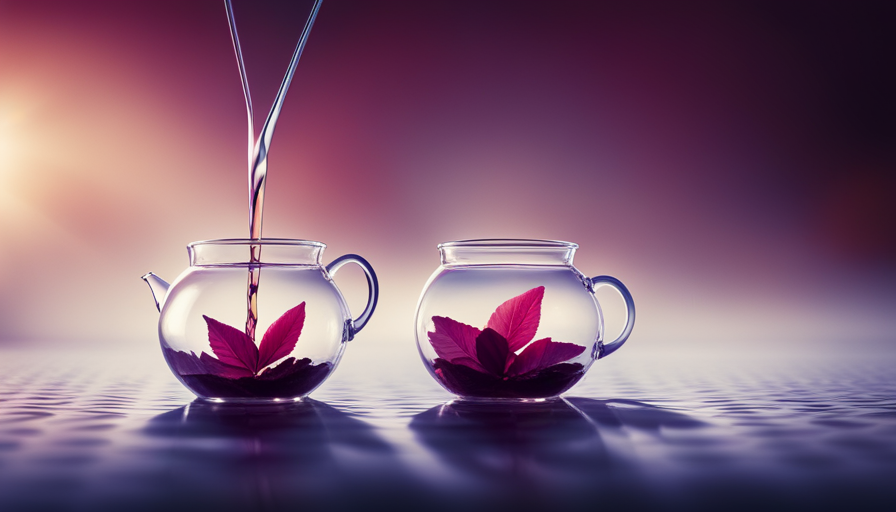
 Turmeric Tea4 weeks ago
Turmeric Tea4 weeks agoWhat Teas Have No Tannins
-

 Turmeric Tea3 months ago
Turmeric Tea3 months agoHow To Make Turmeric Tea With Powder
-
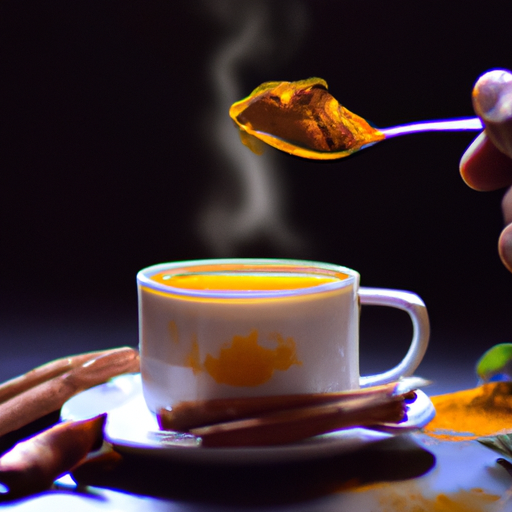
 Turmeric Tea2 months ago
Turmeric Tea2 months agoHow To Put Turmeric In Tea
-
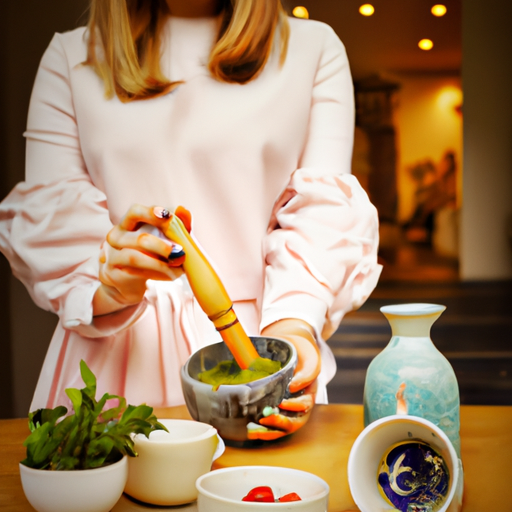
 Matcha Tea3 months ago
Matcha Tea3 months agoHow To Make Matcha Powder From Green Tea
-

 Turmeric Tea2 months ago
Turmeric Tea2 months agoHow Much Is 500 Mg Of Turmeric In Teaspoons?
-
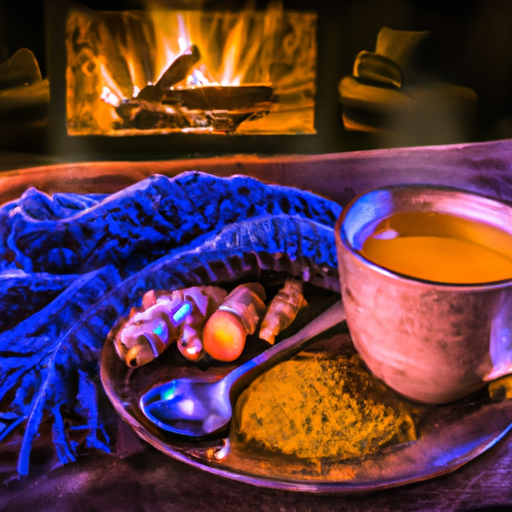
 Turmeric Tea3 months ago
Turmeric Tea3 months agoBrewing the Perfect Cup of Turmeric Tea
-
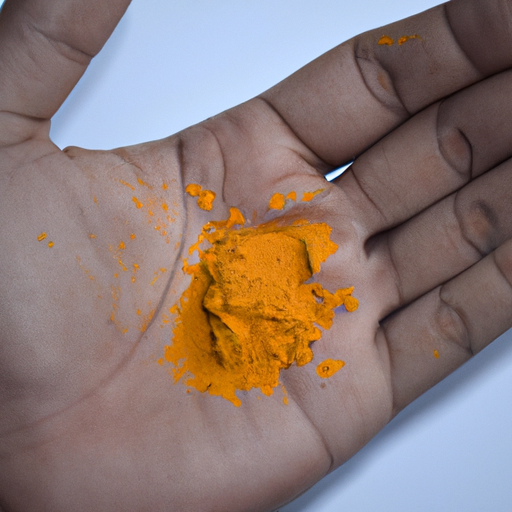
 Turmeric Tea2 months ago
Turmeric Tea2 months agoHow To Use Turmeric To Stop Periods









